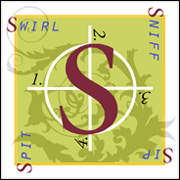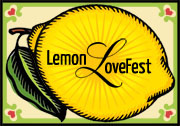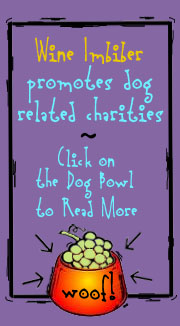|
28 Apr
2008 |
A Rose By Any Other Name… 
A week ago, on the morning of the Santa Barbara County 26th Annual Vintners’ Festival, we had the distinct pleasure of participating in Palmina Wines very first educational program at their Lompoc facility in Santa Barbara County. The program was led by Steve and Chrystal Clifton, the owner/winemakers. The topic was Tocai Friulano. Steve kicked off the program by saying, “This grape has a complicated history.” That’s an understatement, to be sure.
Hungary has its Tokaji, a sweet amber-colored dessert wine made from the Furmint grape. Italy’s Tocai Friulano is made from a grape also known as Sauvignon Vert or Sauvignonasse, which yields wines that are floral with wonderful minerality and a slightly bitter almond finish (and not related to Sauvignon Blanc, which is more herbaceous). But that is where the plot starts to thicken. France has (or had) Tokay d’Alsace, made from grapes called Pinot Grigio in Italy, but this wine now mostly goes by the name Pinot Gris or Tokay Pinot Gris. France started early to phase out the Tokay name gradually, either in foresight or fear as litigation over the name(s) wound through the EU court system for years. Got it so far?
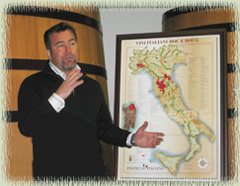 To make it even more complicated, Tocai Friulano is the #1 varietal of the Friuli-Venezia Giulia region of Italy. This region changed hands over the years among Italy, Hungary and Austria. So, who used their name first and, since the names, grapes and wines aren’t really the same at all, who really cares? Well, as with all things involving large sums of money and national pride, lots of people care. Hungary recently won the case and EU countries that don’t have special permission (such as Slovakia) have to stop using the name and its variations (Tocai in Italy; Tokay in France) with the 2007 vintage of their wines. What a shame. The supposed goal is to make everything less confusing to consumers.
To make it even more complicated, Tocai Friulano is the #1 varietal of the Friuli-Venezia Giulia region of Italy. This region changed hands over the years among Italy, Hungary and Austria. So, who used their name first and, since the names, grapes and wines aren’t really the same at all, who really cares? Well, as with all things involving large sums of money and national pride, lots of people care. Hungary recently won the case and EU countries that don’t have special permission (such as Slovakia) have to stop using the name and its variations (Tocai in Italy; Tokay in France) with the 2007 vintage of their wines. What a shame. The supposed goal is to make everything less confusing to consumers.
But what really happened? In real life, isn’t everything driven in some way by love or greed? The story I choose to believe is that the 17th century Venetian princess Aurora Formentini had to present a dowry to her beau, the Hungarian Count Batthujany. While I’m confident that livestock and land were always popular dowry choices, Aurora decided to be different and brought along some vines of Tocai Friulano instead. This becomes the basis of the view that Italy’s grape was the ancestor to the Hungarian grape. The EU courts did not agree.
This story parallels Shakespeare’s Romeo & Juliet. How is Tocai, Tokay or Tokaji any different from a rose, arrows or arroz? Though the words sound similar, they are so different in reality. Juliet was a young lover from Verona, not far from Friuli. If Juliet were alive today, she’d certainly say, “What’s in a name? That which we call Tocai Friulano by any other name would smell as floral.” Romeo’s likely response? “I take thee at thy word. Call me but love, and I’ll be new baptiz’d. Henceforth, I never will be Tocai.”
Which brings me back to the Palmina program. After explaining the history of the grape, Steve and Chrystal explained the striking similarities between the 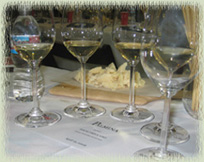 geography and climate of the Friuli-Venezia Giulia region of Italy and the Honea Vineyard in the heart of the Santa Ynez Valley AVA in the Santa Barbara wine country. The Santa Barbara County coastline juts in an east-west direction, unlike the coastal mountains from Alaska to Chile. The unique positioning of the local mountains and the valley flames the love-hate relationship between the cool ocean breezes from the west and the warm desert winds from the east, much as the cold northern weather from the Italian Alps and Dolomites battles with the warm air from the Adriatic Sea to the south of Friuli. This intermediate Santa Ynez microclimate offers a combination of cool nights for acidic balance, warm days for grape growth and a long growing season, ideal for Italian varietals.
geography and climate of the Friuli-Venezia Giulia region of Italy and the Honea Vineyard in the heart of the Santa Ynez Valley AVA in the Santa Barbara wine country. The Santa Barbara County coastline juts in an east-west direction, unlike the coastal mountains from Alaska to Chile. The unique positioning of the local mountains and the valley flames the love-hate relationship between the cool ocean breezes from the west and the warm desert winds from the east, much as the cold northern weather from the Italian Alps and Dolomites battles with the warm air from the Adriatic Sea to the south of Friuli. This intermediate Santa Ynez microclimate offers a combination of cool nights for acidic balance, warm days for grape growth and a long growing season, ideal for Italian varietals.
The Clifton’s say Palmina is a Californian celebration of the rich, wonderful lifestyle and attitude toward food, wine, friends and family that exists in Italy. Fortunately, they aren’t just trying to replicate Italian wines. Steve explained, “We do translations, not emulations, of the Italian wines. We study what is done in Italy and we apply that knowledge in California with Italian varietals to capture what is truly unique about the Santa Barbara area. We are always evolving; not following a formula just to match up to marketing wisdom or broad market expectations.” That was evident from the tastings that morning. Palmina is passionate, artisanal, experimental—nuance in the glass.
The first flight was a sampling of 2006 Tocai Friulano from Bastianich, Lis Neris (a Tre Bicchieri award winner) and Scarbolo of Italy alongside Palmina’s 2006 Tocai Friulano (Bastianich used some oak, while the others used all stainless steel production, revealing the impact of different topographies, climates and production techniques).
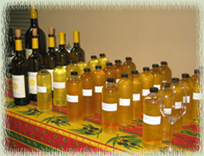 The second flight was the experiment. After tasting the Palmina 2007 Tocai Friulano (cold fermented in stainless steel), we studied four unbottled wine samples. The first sample went into neutral 10-year old barrels as juice for barrel fermentation with all the sediment (i.e., on the lees) and no temperature control for full malolactic fermentation. For the second and third samples, Palmina followed the production process for red wine (having the carbon dioxide from grape skin contact replace any need for sulphur dioxide to protect the wine from oxidation, an idea endorsed by a colleague in Italy who wanted a floral and balanced white wine). The second sample was punched down by hand with primary fermentation in open-top barrels, taking the clear wine without sediment to age in order to test the effect of skin contact without sediment. The third sample followed the same process as the second, but went directly from press to barrel, so you really get the full fruit flavor. The final taste was a blend of the other three in equal parts. We liked the third sample the most, followed by the blend. Steve explained that the third sample is still changing weekly and he plans to give it more time to mature even more. We can look forward to some interesting wine from Palmina in the coming years.
The second flight was the experiment. After tasting the Palmina 2007 Tocai Friulano (cold fermented in stainless steel), we studied four unbottled wine samples. The first sample went into neutral 10-year old barrels as juice for barrel fermentation with all the sediment (i.e., on the lees) and no temperature control for full malolactic fermentation. For the second and third samples, Palmina followed the production process for red wine (having the carbon dioxide from grape skin contact replace any need for sulphur dioxide to protect the wine from oxidation, an idea endorsed by a colleague in Italy who wanted a floral and balanced white wine). The second sample was punched down by hand with primary fermentation in open-top barrels, taking the clear wine without sediment to age in order to test the effect of skin contact without sediment. The third sample followed the same process as the second, but went directly from press to barrel, so you really get the full fruit flavor. The final taste was a blend of the other three in equal parts. We liked the third sample the most, followed by the blend. Steve explained that the third sample is still changing weekly and he plans to give it more time to mature even more. We can look forward to some interesting wine from Palmina in the coming years.
The 2006 US-EU Agreement on Trade in Wine grandfathers existing uses of Tokay on non-EU wine, so Palmina was able to continue using the Tocai Friulano designation for their 2007 vintage. This helped, because Palmina labeled the wine before the final EU decision was announced. Steve said Palmina may move away from the Tocai designation starting with the 2008 vintage, in sympathy to Italian producers. Italian producers are going in various directions on the name issue, but some say they may converge on “Friulano”. Steve explained that Friulano is not an accepted grape designation in California at this time, presenting a further complication. Maybe Palmina’s grandfathered status is worth keeping for a while.
If Shakespeare were here to comment on the situation, perhaps, he would sum it up this way:
A glooming peace this morning with it brings;
The sun for sorrow will not show his head.
Go hence, to have more talk of these sad things;
Some shall be pardon’d, and some punished;
For never was a story of more woe
Than this of Tocai and her Friulano.
At Palmina, food and wine are always partners in any discussion. Tocai Friulano pairs well with asparagus, unlike most other wines. Not surprisingly, Friuli is one of the top asparagus producers of Italy. 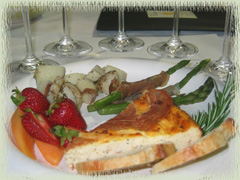 This wine also pairs nicely with artichokes, broccoli and brussel sprouts. Our hosts served breadsticks, Parmesan cheese and Italian meat during most of the tasting. Towards the end of the program, they presented a Piemonte-style brunch, including asparagus wrapped in prosciutto, a wonderful savory cheesecake, strawberries, cantaloupe and rosemary potatoes. And more great wine. What a way to start the day!
This wine also pairs nicely with artichokes, broccoli and brussel sprouts. Our hosts served breadsticks, Parmesan cheese and Italian meat during most of the tasting. Towards the end of the program, they presented a Piemonte-style brunch, including asparagus wrapped in prosciutto, a wonderful savory cheesecake, strawberries, cantaloupe and rosemary potatoes. And more great wine. What a way to start the day!
Comments (2)
October 31, 2008 at 6:11 pm
krisz said:
Hi.
I’ve just begun to learn wines though i’ve been loving and drinking them for a while.
My knowledge is far less than it’s supposed to be to leave an appropriate comment but i still feel i have to do it.
Your chosen story of ‘ancestor’ of Tokaji seems to me wrong to believe in. And it also can make people think that it’s true. For me it’s not even good as a legend however i can’t deny the fact that some Italian varieties can be grown in Hungary though i can’t name any of them for as far as i know it’s not really possible to find out the origin of some of our grapes.
So.
Tokaj is a historical town in Hungary and Tokaj-Hegyalja is one of the most famous wine regions in the country. The name of Tokaj was first mentioned in the 11th century as a wine-growing region.
There are many different theories of starting of the viticulture of the area. Some claims it started in the Celtic times and there are some proofs from the Roman ages.
It’s not possible to tell when the first wines were made but records show that vineyards had been established in the early 12th century.
In the 12-13th century there were latin people invited to settle in Tokaj region who could be Walloons or Italian no one knows exactly.
So there could be Italian roots of Hungarian viticulture though researchers state that the ancient Hungarian tribes had their own tradition of wine making who only arrived from Asia -to the area now known as Hungary- only in the 9th century..
And also as you mentioned Friuli-Venezia Giulia region of Italy was a part of Hungary long time ago for a while. But that doesn’t mean that the names are each others origin.
I believe it’s only a simple coincidence though i better read more about the subject.
There are two possibilites of the origin of the name Tokaj. It can come from a slavic word, Stokaj (Slavs were involved with viticulture, a part of the old Tokaj region belongs to Slovakia and Checz Republic nowadays.)
And it also can come from an Armenian word meaning ‘grape’.
Tokaj belonged to Transylvania where amongst others Count Batthyànyi reigned in the ealy 1600’s whose wife was Princess Aurora Formentini. Wine export was an important source for Transylvania’s governors.
Just a century later was introduced the Tokaji Aszù to King Louis XIV of France and it became to known there as Tokay.
But I’m still not sure that is why they used the name Tokay or Tocai for their Pinot Gris for there is no Pinot Gris grown in Tokaj though it is grown in Hungary under the name Szà’rkebaràit (‘grey friar’).
Tokaji simply means ‘from Tokaj’ or ‘of Tokaj’.
I believe many people think that Tokaji is a wine however it’s the area where the wines are grown and fermented.
So when someone says i’m drinking a Tokaji it only means that the wine is from Tokaj (region).
As a Hungarian that’s my opinion. I haven’t heard anyone (my friends and people who i’ve ever talked to about wines) in my country calling the sweet dessert wine (what you mentioned as Tokaji) only Tokaji. That’s Tokaji Aszù.
Maybe someone should correct me..
But the proper name for me is for example Tokaji Hà¡rslevel? or Tokaji Furmint.
I don’t have the right to judge decisions, which wine can have which name, however pride made me write this comment. I believe we should know the difference between Tokaji which is not really a wine and Tocai Friulano, and so on..
And then -if we are interested enough to learn what we consume- we won’t be confused though I can understand the importance of the case..
Otherwise i enjoyed your article, i wish you the chance to taste more and more wines from around the world and share your experience with us who has much to learn!
Krisz from HU

Rich said:
Krisz,
Thank you for the thoughtful comment and the additional history and insights. You have given me a lot of points to think about and do further research. If I can shed more light on this subject, I’ll post the information here or write another article on the subject. Again, many thanks.
Rich










